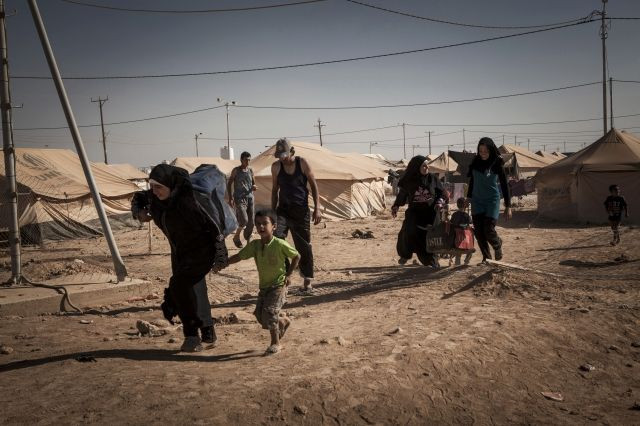US Troops Operating In Jordan Close To Syrian Border

The U.S. has sent troops to Jordan to assist the government in handling the flood of Syrian refugees besides bolstering its military capabilities and monitoring chemical and biological weapons sites in Syria, U.S. Defense Secretary Leon Panetta said Wednesday.
The 150-member team of mainly the U.S. Army special operations forces is constructing a headquarter in Amman to jointly work with Jordanian forces on operational planning and intelligence sharing, Reuters has reported citing a senior U.S. defense official.
Speaking at a NATO conference of defense ministers in Brussels, Panetta said that while the U.S. government believes the Syrian chemical weapons stockpile is still secure, intelligence suggests Bashar al-Assad’s regime might have moved some of it to protect them from falling into the hands of the rebels, the Associated Press reported.
“We have been working with Jordan for a period of time now ... on a number of the issues that have developed as a result of what's happened in Syria," Panetta was quoted as saying at a news conference by Reuters.
Syria is believed to own one of the largest undeclared stockpiles of chemical and biological weapons in the world, including sarin, the nerve agent, mustard gas and cyanide, unnamed U.S. officials were reported as saying in July by the New York Times.
The news of the U.S. military presence in Jordan, following several days of shelling between Turkey and Syria, suggests the likelihood of the civil war turning into a regional conflict.
The troops were sent with less than a month to go for the U.S. presidential election, even as President Barack Obama’s White House rival Mitt Romney criticized him for weak American leadership in foreign policy.
Reuters reported another U.S. official, who spoke on the condition of anonymity, saying that the military team was not engaged in covert operations and had been housed at the King Abdullah II Special Operations Training Center, north of Amman, which the New York Times reported was 35 miles from the Syrian border.
Representative Mike Rogers (R) who was the Chairman of the House Intelligence Committee in July expressed alarm over the weapons of mass destruction (WMD) in Syria.
“I have made clear for some time now that I am gravely concerned about the large stockpiles of advanced weapons in Syria,” Rogers said in a statement. “These dangerous weapons, that include advanced shoulder-fired anti-aircraft and anti-tank missiles, and biological and chemical weapons, make Libya look like an antique gun show. Several dangerous terrorist groups, including al-Qaeda in Iraq, are active in Syria, and I am very concerned that as the situation in Syria deteriorates, these weapons could fall into the wrong hands.”
“We cannot discount that the Assad regime could make a decision to use these weapons in an act of desperation, and we must act accordingly,” he added.
Jordan’s King Abdullah II has also expressed similar fears of militant networks acquiring weapons, primarily the Lebanese Hezbollah, which opposes Jordan’s alliance with the U.S.
Obama warned the Syrian regime in August that he would consider military intervention if they tried to relocate the WMDs.
“We have been very clear to the Assad regime, but also to other players on the ground, that a red line for us is we start seeing a whole bunch of chemical weapons moving around or being utilized. That would change my calculus. That would change my equation," he said.
This isn't the first time that the Syrian government has come under international scrutiny for the use of WMDs.
The first and the only officially reported Syrian employment of chemical weapons was in 1982, during a conflict between the rebels of the Muslim Brotherhood and the ruling Alawite sect.
In February 1982, the Muslim Brotherhood clashed with the government forces under President Hafez al-Assad in the city of Hama. Over two weeks of violence resulted in the deaths of 7,000 to 35,000 people, including an estimated 1,000 soldiers.
Lethal cyanide gas was reportedly used by the Syrian regime in the slaughter of Sunni residents of Hama. Use of hydrogen cyanide was unsubstantiated, but reports in the 1980s suggested that hydrogen cyanide was used by the Syrian government against the insurgents.
© Copyright IBTimes 2024. All rights reserved.






















